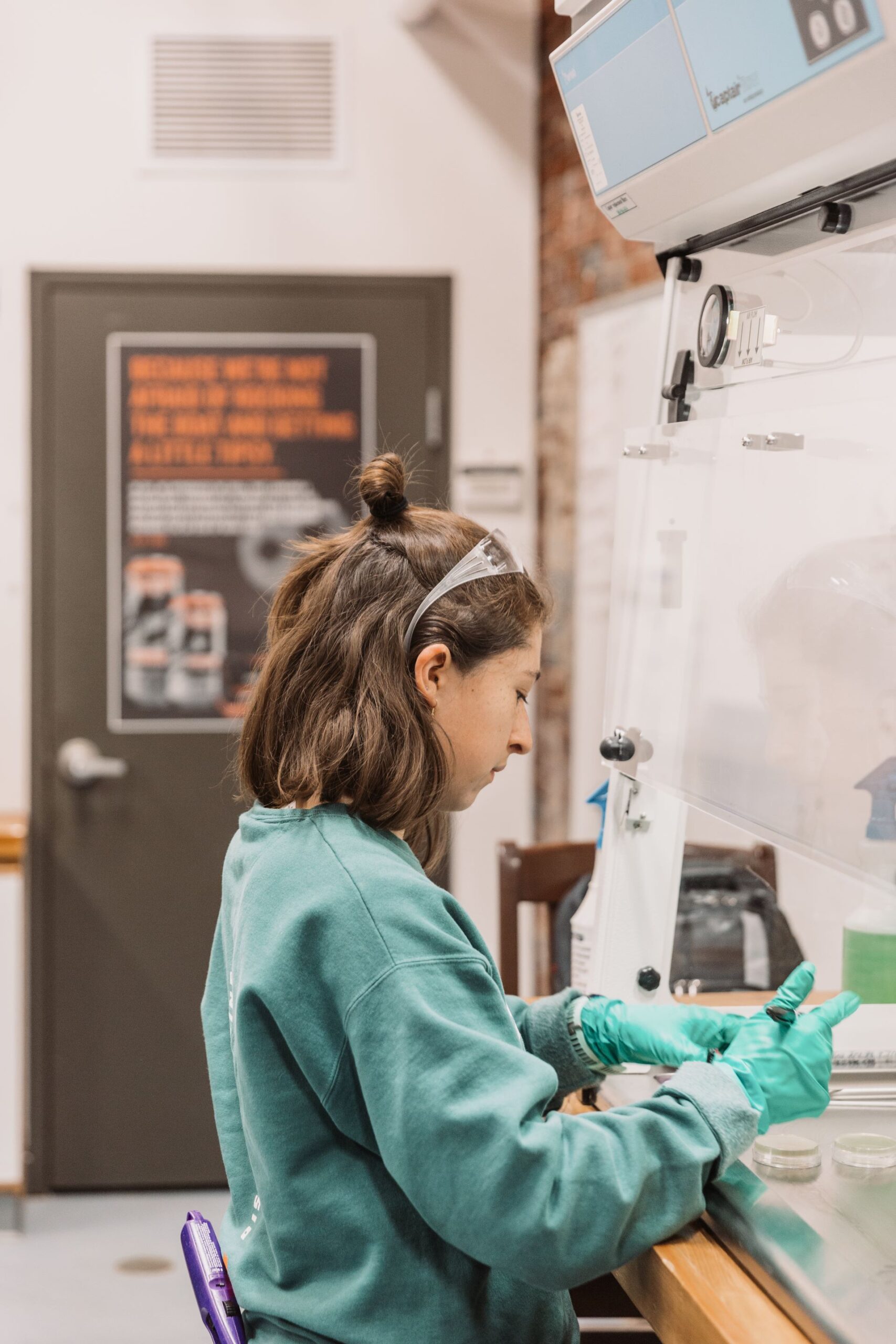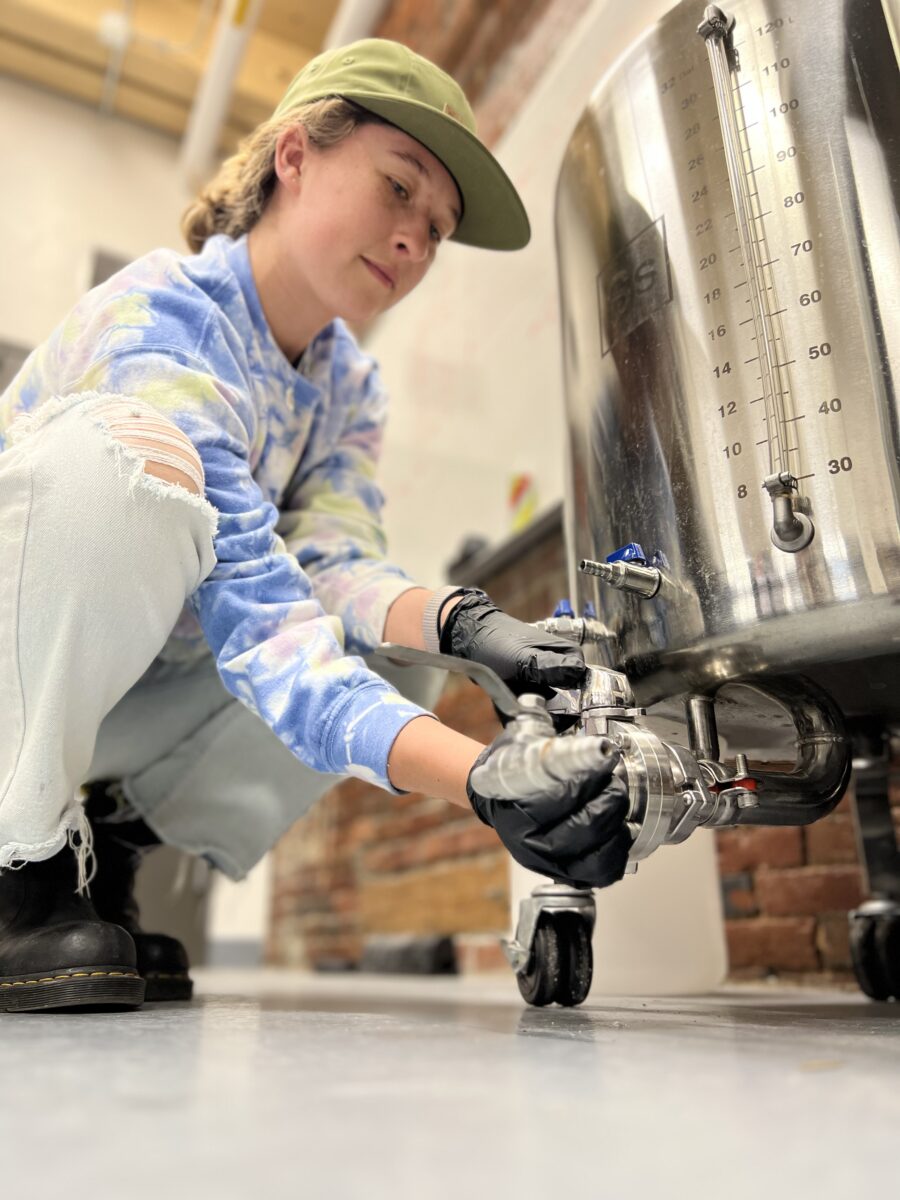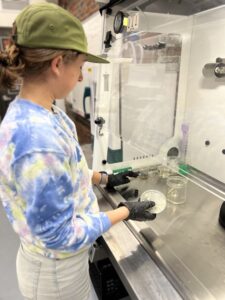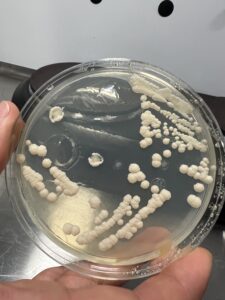Yeast Propagation: The How and the Why

Yeast Propagation!

Welcome to the Baxter Brewing Quality Lab, where science and beer unite! The lab has one lab tech (myself) and our quality director, but the space also serves as a common area where people come to discuss quality matters, experiment with new recipes, and do our weekly sensory. The lab is also home to all physical and chemical measurements (think ABV and pH), microbiological testing, yeast cell counting, and many other measurements all of which are important to ensure that we consistently produce delicious beer for everyone to enjoy.
You may have heard the saying “brewers make wort, but yeast makes beer”. Our yeast is an unofficial member of our production team, working 24/7 to ferment the sugars in wort to make the beer we all love. Yeast cell counting is particularly important because we harvest and reuse our yeast for up to 10 generations. We need to track yeast cell density and viability to ensure that we are adding the appropriate amount of yeast to each brew to hit our targets. Our yeast is pretty hardy, and it survives many generations despite changing temperatures, pressures, and storage times, but eventually it gets old and tired (don’t we all?!) and the time comes when we must buy fresh yeast and start the process over again. Because yeast is expensive, we try to stretch each purchase out as many generations as possible without sacrificing reliable fermentation times or risking microbiological infections. However, every now and then we need to cut our losses and buy fresh yeast at an early generation if an issue arises.
This situation presents an exciting opportunity for an improvement to our quality program and our expenses. Can we propagate our own yeast in-house to keep our yeast younger and healthier and avoid spending money on fresh yeast from an external source? The answer: Yes! A few months ago, we began our yeast propagation journey. We did our research, invested in some new equipment, purchased our first yeast slant (small quantity of yeast in a test tube), and we were ready to begin! We planned on conducting multiple trials before using propagated yeast in our beer. The goal of the trials was to nail down our schedule and procedures and to ensure that we could consistently keep the yeast free from any microbiological infections, which could impact the flavor of the final product. Once we got our new equipment set up, we began our first trial. The first step was to take a tiny, invisible amount of yeast from the slant and streak it over a petri dish with yeast malt agar (solid media with nutrients for yeast to grow). After a day in the incubator, the plate had several small colonies of yeast – visible growth was already happening! As a science nerd, this first step was already very exciting! Next, we selected two colonies and transferred them to a test tube with a yeast nutrient broth. From there, we stepped up our yeast to a flask, then a larger flask, and eventually into a 1-barrel tank. We transferred the yeast every 48 hours and added more nutrient broth or wort each time to make sure the yeast had enough food to keep it happy. The whole time we agitated and aerated the yeast to ensure it had good contact with nutrients and oxygen to facilitate speedy growth. In just two weeks we went from an invisible quantity of yeast to 25 gallons, which is enough for a 60-barrel batch of beer! All that yeast for a fraction of the cost of purchasing fresh yeast! Already this was a win for the quality program.
A few months ago, we began our yeast propagation journey. We did our research, invested in some new equipment, purchased our first yeast slant (small quantity of yeast in a test tube), and we were ready to begin! We planned on conducting multiple trials before using propagated yeast in our beer. The goal of the trials was to nail down our schedule and procedures and to ensure that we could consistently keep the yeast free from any microbiological infections, which could impact the flavor of the final product. Once we got our new equipment set up, we began our first trial. The first step was to take a tiny, invisible amount of yeast from the slant and streak it over a petri dish with yeast malt agar (solid media with nutrients for yeast to grow). After a day in the incubator, the plate had several small colonies of yeast – visible growth was already happening! As a science nerd, this first step was already very exciting! Next, we selected two colonies and transferred them to a test tube with a yeast nutrient broth. From there, we stepped up our yeast to a flask, then a larger flask, and eventually into a 1-barrel tank. We transferred the yeast every 48 hours and added more nutrient broth or wort each time to make sure the yeast had enough food to keep it happy. The whole time we agitated and aerated the yeast to ensure it had good contact with nutrients and oxygen to facilitate speedy growth. In just two weeks we went from an invisible quantity of yeast to 25 gallons, which is enough for a 60-barrel batch of beer! All that yeast for a fraction of the cost of purchasing fresh yeast! Already this was a win for the quality program. After a few more successful trials, we will begin using propagated yeast in some of our brews. In addition to saving the brewery a lot of money, we will be using our own quality program to validate the health of our yeast rather than relying on an external lab. So, when you’re enjoying a Baxter beer over the summer, rest assured that the quality lab is hard at work making sure that every batch is produced with the best quality yeast possible.
After a few more successful trials, we will begin using propagated yeast in some of our brews. In addition to saving the brewery a lot of money, we will be using our own quality program to validate the health of our yeast rather than relying on an external lab. So, when you’re enjoying a Baxter beer over the summer, rest assured that the quality lab is hard at work making sure that every batch is produced with the best quality yeast possible.
-Caitlin, Lab Technician
